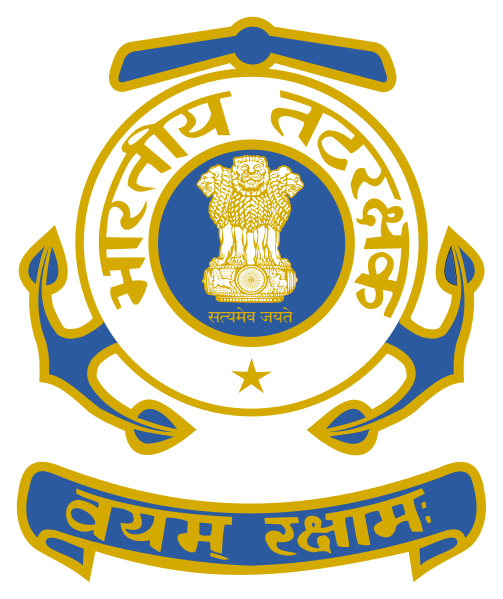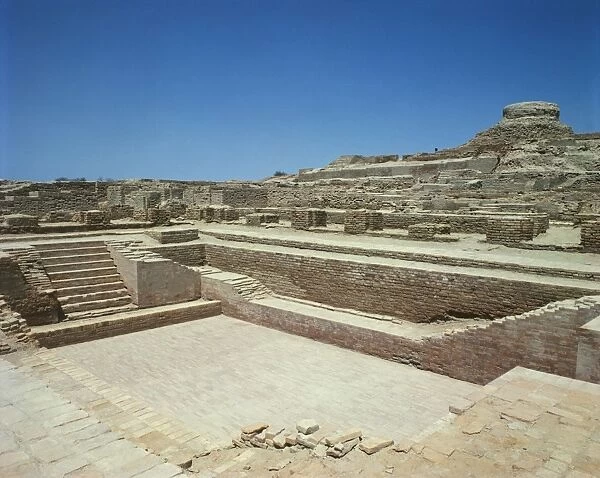Table of Contents
Indian Culture and Tradition: A Journey Through Heritage, Cuisine, Attire, and More
Introduction of Indian Culture and Tradition
Indian’s Culture and Tradition is A large, huge Consuming data for World. India is a land of unparalleled diversity, where every corner holds a unique story, tradition, and cultural essence. From the Himalayas in the north to the beaches in the south, the deserts in the west to the lush forests in the east, Indian culture is a tapestry woven with countless threads of history, religion, language, and art. The significance of Indian Culture and Tradition’s diversity is not merely in its variety but Indian Culture and Tradition in-depth in how it harmoniously coexists, creating a rich and vibrant society.
Historical Background of Indian Ancient Culture
Ancient Indian Civilization As Ancient Indian Culture and Tradition
India’s civilization is one of the oldest in the world, dating back to the Indus Valley Civilization around 2500 BCE. This ancient society was advanced in urban planning, trade, and crafts. The Vedic Age followed, laying the foundation for Hinduism and its scriptures.


Influences of Various Dynasties
Over millennia, India saw the rise and fall of numerous dynasties, each leaving an indelible mark on its culture. The Maurya Empires and Gupta Empires contributed significantly to art, science, and philosophy. The Mughal Empire introduced Persian influences, enriching Indian art, cuisine, and architecture.
Religions in India
Hinduism
Hinduism is the predominant religion in India, characterized by a variety of rituals, festivals, and philosophies. It encompasses diverse practices and beliefs but revolves around concepts like Dharma (duty), Karma (action), and Moksha (liberation).
Islam
Islam arrived in India in the 7th century and flourished during the Mughal period. It has significantly influenced Indian culture, especially in art, architecture, and cuisine.
Christianity
Introduced by Saint Thomas in the 1st century, Christianity has a strong presence in India, particularly in states like Kerala and Goa. Indian Christians celebrate festivals like Christmas and Easter with great fervor.
Sikhism
Founded in the 15th century in Punjab, Sikhism emphasizes equality, community service, and devotion to God. Sikh festivals like Baisakhi are celebrated with vibrant parades and music.
Buddhism and Jainism
Both religions originated in India around the 6th century BCE. They emphasize non-violence and have contributed to Indian art and philosophy. Sites like Bodh Gaya and Sarnath are significant Buddhist pilgrimage centers. For More: – Click Here
Languages in India
Official Languages
India has 22 officially recognized languages, with Hindi and English being the primary ones. Each state has its own official language, reflecting its cultural identity.
Regional Dialects
Apart from the official languages, India is home to hundreds of dialects. These dialects vary widely, even within small geographical areas, showcasing the linguistic diversity of the country.
Festivals and Celebrations
Diwali
The Festival of Lights, Diwali, is celebrated across India with much enthusiasm. It signifies the victory of light over darkness and good over evil, marked by lighting oil lamps, bursting firecrackers, and sharing sweets.
Holi
Holi, the Festival of Colors, celebrates the arrival of spring. People smear colors on each other, dance to music, and enjoy festive foods, symbolizing joy and the triumph of good over evil.
Eid
Eid-ul-Fitr and Eid-ul-Adha are significant Islamic festivals. Eid-ul-Fitr marks the end of Ramadan, the holy month of fasting, while Eid-ul-Adha commemorates the willingness of Ibrahim to sacrifice his son in obedience to God.
Christmas
Christmas is celebrated with joy and warmth by Christians in India. Churches are decorated, carols are sung, and families gather to share festive meals and exchange gifts.
Baisakhi
Baisakhi is a harvest festival celebrated in Punjab, marking the Sikh New Year. It is observed with traditional dances like Bhangra and Gidda, music, and feasts.
Navratri and Dussehra
Navratri is a nine-night festival dedicated to the worship of Goddess Durga. Dussehra, which follows Navratri, celebrates the victory of Lord Rama over the demon king Ravana, symbolizing the triumph of good over evil.
Indian Cuisine
North Indian Cuisine
North Indian cuisine is known for its rich and creamy gravies, tandoori dishes, and a variety of bread like naan and roti. Popular dishes include butter chicken, paneer tikka, and biryani.
South Indian Cuisine
South Indian food is famous for its use of rice, coconut, and spices. Dishes like dosa, idli, sambar, and rasam are staple foods, often accompanied by a variety of chutneys.
East Indian Cuisine
East Indian cuisine, particularly Bengali, is known for its emphasis on fish, rice, and sweets. Delicacies like macher jhol (fish curry), rasgulla, and sandesh are widely enjoyed.
West Indian Cuisine
West Indian cuisine varies significantly across the region. Maharashtra offers spicy curries and street foods like vada pav, while Gujarat is known for its vegetarian dishes like dhokla and thepla. Goan cuisine, influenced by Portuguese, features seafood and coconut-based dishes.
Traditional Indian Attire
Saree and Dhoti
The saree is a timeless piece of clothing worn by women across India, draped in various styles. The dhoti, a traditional garment for men, is a rectangular piece of cloth wrapped around the waist.
Salwar Kameez
The salwar kameez, a comfortable and elegant outfit, is popular among women in North India. It consists of a tunic (kameez) paired with loose trousers (salwar) and a dupatta (scarf).
Kurta Pajama
The kurta pajama is a traditional outfit for men, comprising a long tunic (kurta) and loose pants (pajama). It is often worn during festivals and special occasions.
Lehenga Choli
The lehenga choli is a traditional attire worn by women, especially during weddings and festivals. It consists of a long skirt (lehenga), a blouse (choli), and a dupatta.
Indian Art and Craft
Classical Dances
India is home to several classical dance forms like Bharatanatyam, Kathak, Odissi, and Kathakali. Each dance form has its own unique style, costumes, and musical accompaniment, narrating stories through expressive movements and gestures.
Traditional Music
Indian music is diverse, ranging from classical styles like Hindustani and Carnatic to folk and contemporary music. Instruments like the sitar, tabla, and veena play a crucial role in Indian music.
Handicrafts
Indian handicrafts are renowned worldwide for their intricacy and beauty. This includes pottery, textiles, jewelry, and woodwork, each region offering its unique style and craftsmanship.
Paintings
India has a rich tradition of painting, from ancient murals in Ajanta and Ellora to miniature paintings of the Mughal and Rajput eras. Modern Indian art also flourishes, blending traditional and contemporary styles.
Indian Architecture
Temples
Indian temples are architectural marvels, with intricate carvings and grand structures. Temples like Meenakshi in Madurai and Jagannath in Puri are not only places of worship but also cultural hubs.
Forts and Palaces
India’s history of royalty is reflected in its numerous forts and palaces, such as the Amber Fort in Jaipur and Mysore Palace. These structures showcase exquisite craftsmanship and grandeur.
Mughal Architecture
Mughal architecture, exemplified by the Taj Mahal, is renowned for its symmetry, grandeur, and intricate decorations. It blends Islamic, Persian, and Indian architectural styles.
Family Structure and Social Norms
Joint Family System
The joint family system, where extended families live together, is a hallmark of Indian society. This system fosters close relationships and mutual support among family members.
Role of Elders
Elders hold a respected position in Indian families, often making key decisions and imparting wisdom. Their role is central to maintaining family values and traditions.
Marriage Traditions
Indian weddings are elaborate affairs, with numerous rituals and ceremonies. Practices vary by region and religion but generally emphasize familial bonds and cultural traditions.
Indian Folklore and Mythology
Ramayana and Mahabharata
The epics Ramayana and Mahabharata are central to Indian folklore, teaching moral lessons and cultural values through their narratives. They are often retold through various art forms, including dance, drama, and literature.
Panchatantra Tales
The Panchatantra, a collection of ancient Indian fables, uses animal characters to convey moral lessons. These stories are popular among children and adults alike.
Indian Cinema and Entertainment
Bollywood
Bollywood, the Hindi film industry based in Mumbai, is famous for its vibrant musicals, dramatic storytelling, and star-studded casts. It has a significant influence on Indian pop culture.
Regional Cinema
Regional cinema, including Tamil, Telugu, Bengali, and Malayalam films, has its own unique styles and narratives, reflecting the diverse cultures of India.
Traditional Theatre
Traditional theatre forms like Kathakali, Yakshagana, and Ramlila combine music, dance, and drama to tell stories from mythology and folklore.
Yoga and Ayurveda
Historical Significance
Yoga and Ayurveda, ancient Indian practices, focus on holistic well-being. Yoga combines physical postures, breathing exercises, and meditation, while Ayurveda offers natural remedies for health and wellness.
Modern-Day Practices
Today, yoga and Ayurveda are popular worldwide, celebrated for their benefits in promoting physical and mental health. Many people integrate these practices into their daily routines.
Indian Festivals and Their Significance
Festivals in India are not just about celebrations, they are a way of life, reflecting the country’s rich cultural heritage. They bring people together, regardless of their background, to celebrate shared traditions and values.
Conclusion
Indian culture and tradition are a magnificent blend of the old and new, where ancient practices coexist with modern advancements. This cultural diversity and richness make India a unique and fascinating place, offering a deep sense of unity in diversity.
FAQs
Q.1 What are some key elements of Indian culture?
Ans.Indian culture is characterized by its diverse languages, religions, festivals, cuisine, traditional attire, art, and architecture. It emphasizes family values, respect for elders, and communal harmony.
Q.2 How has Indian cuisine evolved over time?
Ans.Indian cuisine has evolved through various influences, including ancient cooking traditions, Mughal cuisine, and regional diversity. It is known for its rich flavors, use of spices, and variety of vegetarian and non-vegetarian dishes.
Q.3 What is the significance of Indian festivals?
Ans.Indian festivals celebrate religious and cultural traditions, bringing people together in joy and festivity. They often mark important historical or seasonal events and emphasize community bonding and cultural heritage.
Q.4 How does traditional Indian attire vary across regions?
Ans.Traditional Indian attire varies widely across regions. The saree and dhoti are common nationwide, while the salwar kameez is popular in the north, and the lehenga choli is worn during special occasions. Each region has its unique styles and fabrics.
Q.5 What role do family and social norms play in Indian society?
Ans.Family and social norms play a crucial role in Indian society. The joint family system fosters strong familial bonds, while respect for elders and adherence to traditional values maintain social harmony and cultural continuity. 453






Leave a Reply